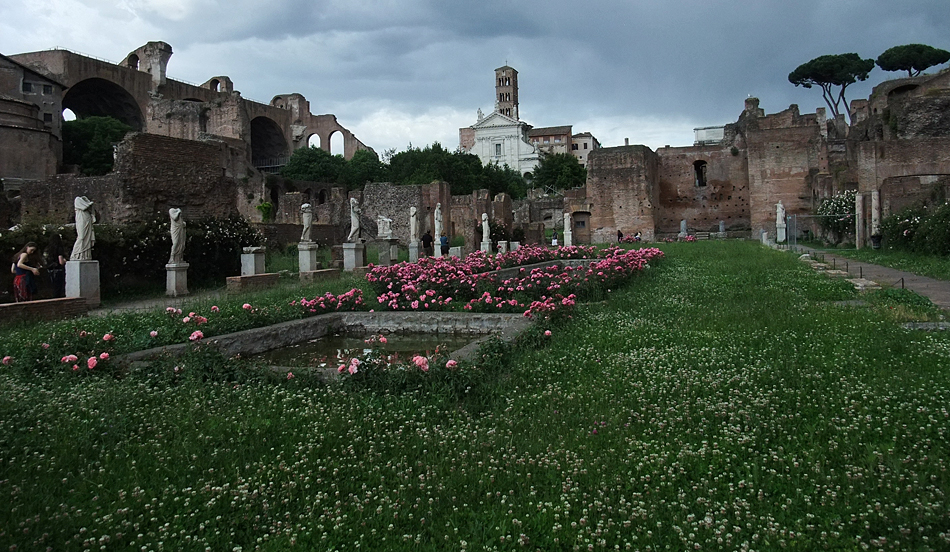
Atrium Courtyard: Commemorative Portrait Statues of the Vestales Maximae (view toward the great hall: #12 on the Plan)

The statues now placed around the perimeter of the open courtyard were discovered in the late nineteenth century, in a pile at the west end of the courtyard, where they had been placed for ultimate destruction by stonecutters and lime makers. Not all the surviving statues of the Virgines Vestales Maximae that once stood in the the Atrium courtyard are to be found there today; some are preserved elsewhere, several are no longer on display anywhere (a notable example is this elegant sculpture once exhibited in the Baths of Diocletian museum). These statues, dating from the early second to the late third century CE, give evidence of aspects of dress attributed to the Vestals, but with no indication of color. In a 1908 article, Deman observes that there are four "insignia of their priestly office" --not all present in every extant statue -- that are proof of Vestal identity: seni crines, infula and vittae, veil, and the suffibulum, a short white veil with a purple border, fastened with a fibula(341). This statue of a Chief Vestal displays her headress covered with the suffibulumthat Vestals may have worn during sacrifices. The Vestal headdress is indeed distinctive: her hair is braided and then wrapped some four to six turns in an infula, a long strand of white and red wool twisted together; at the nape of her neck the infula is attached to vittae, flat white bands whose ends hang forward over the Vestal's shoulders in loops. While their distinctive hairstyle, the seni crines, which they are said to share with brides, set the Vestals apart, extant images of brides and Vestals do not give a clear picture of this arrangement (see a video interpretation). Many statues of the Maxima depict her modestly draped in a voluminous palla, which is sometimes drawn up over her head. She wears a floor-length tunic (some statues reveal on their shoulders the straps of the matronal garment, the stola) that is belted, like the bride's, with a Hercules knot. For an analysis of these statues, see Esther Boise van Deman's article "The Value of the Vestal Statues as Originals" (American Journal of Archaeology (1908) 12.3324-342), and M.M. Lindner (2015), Portraits of the Vestal Virgins in the Bibliography.